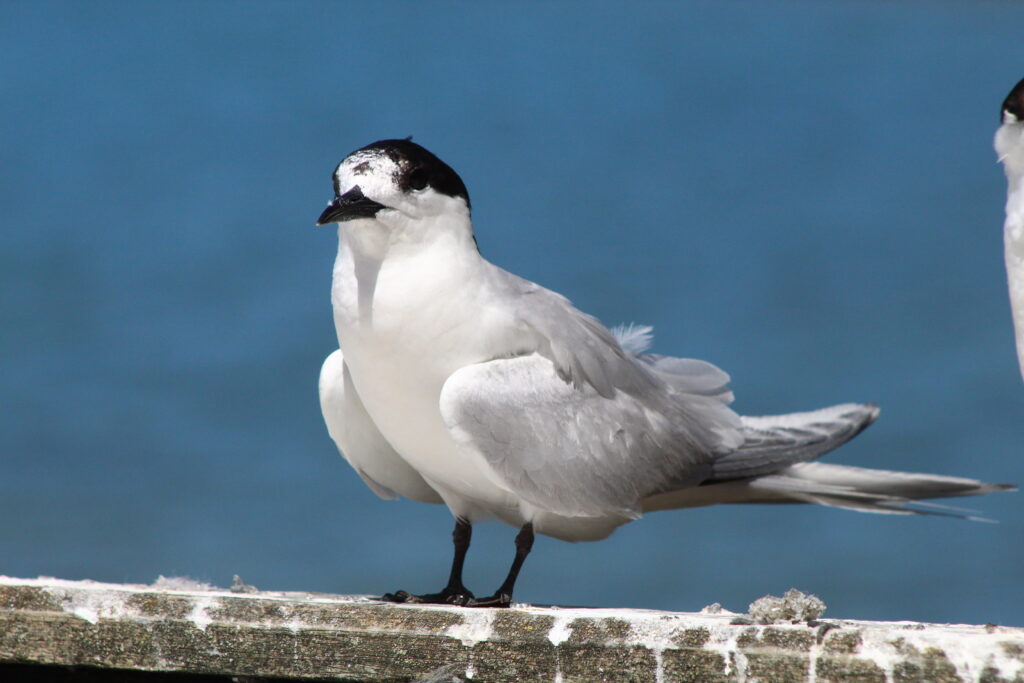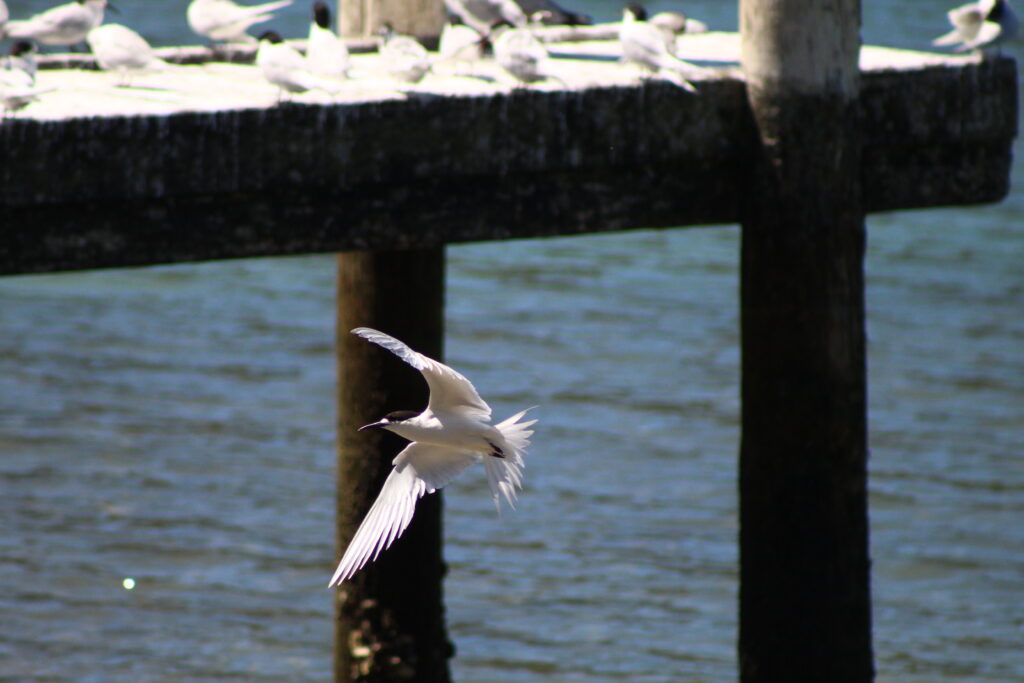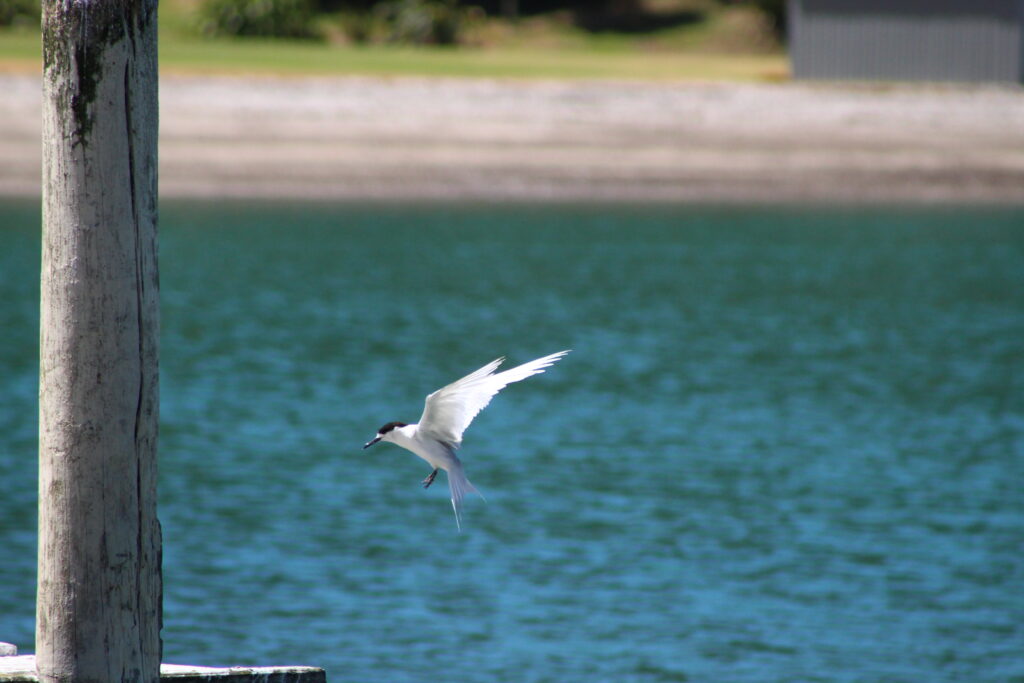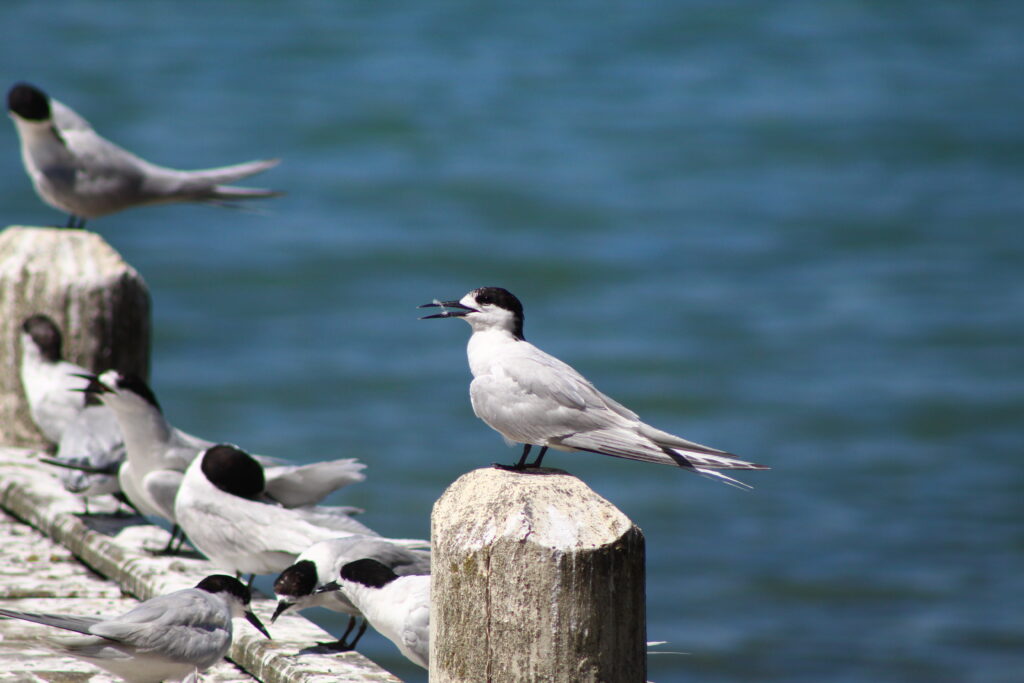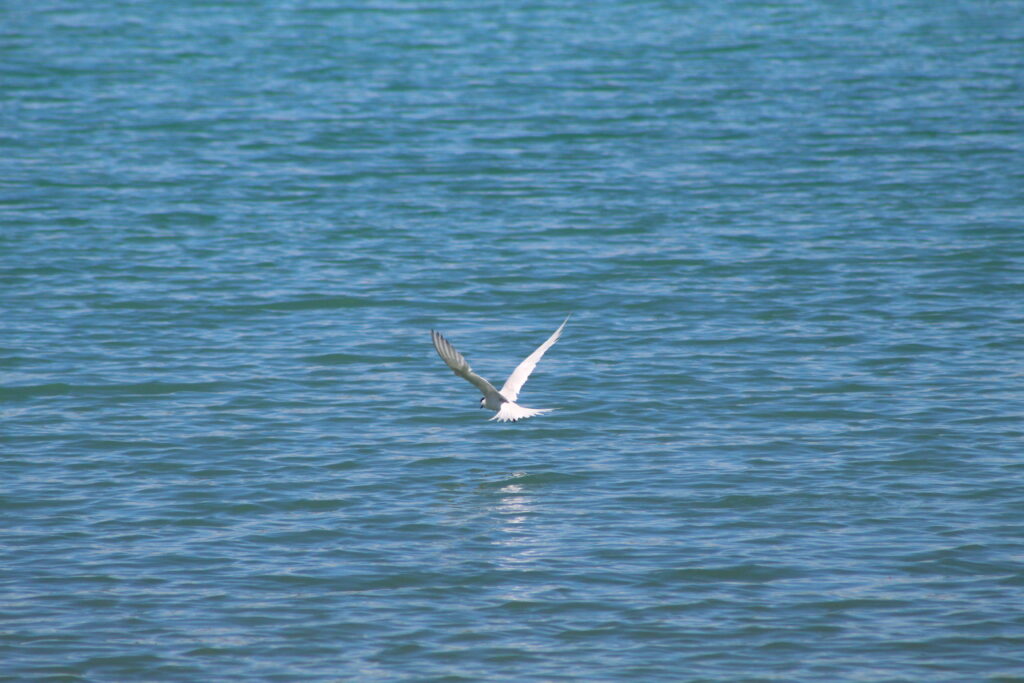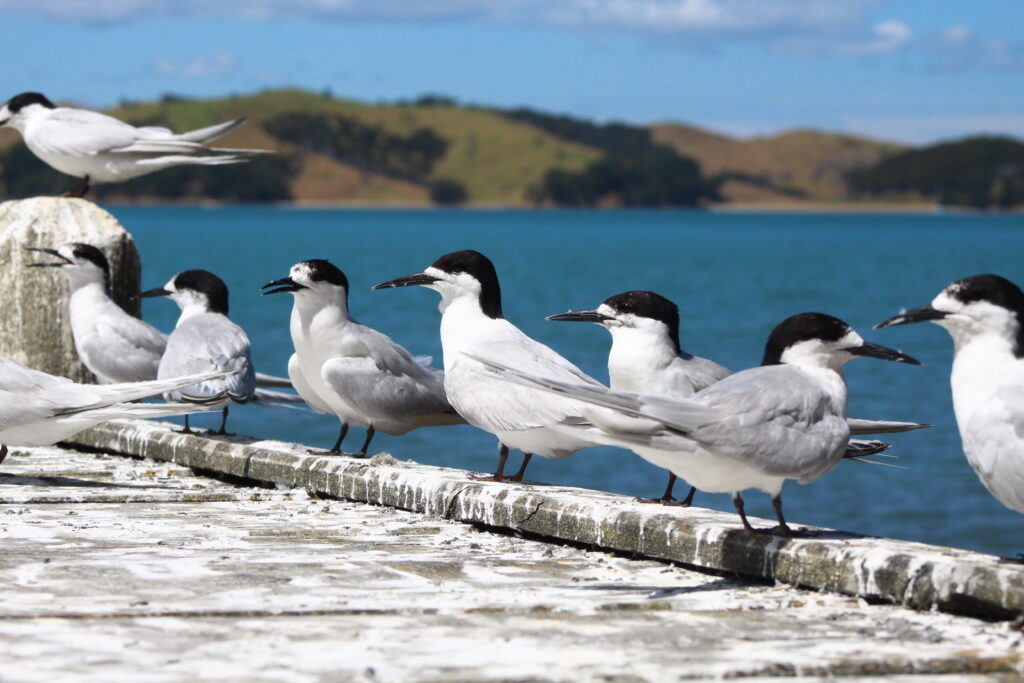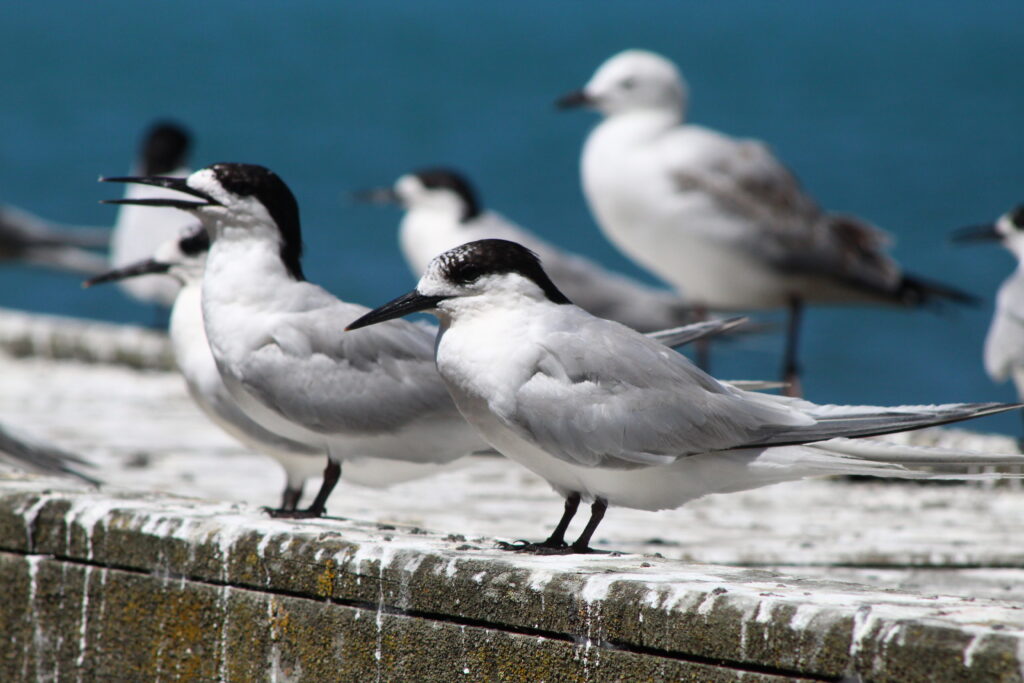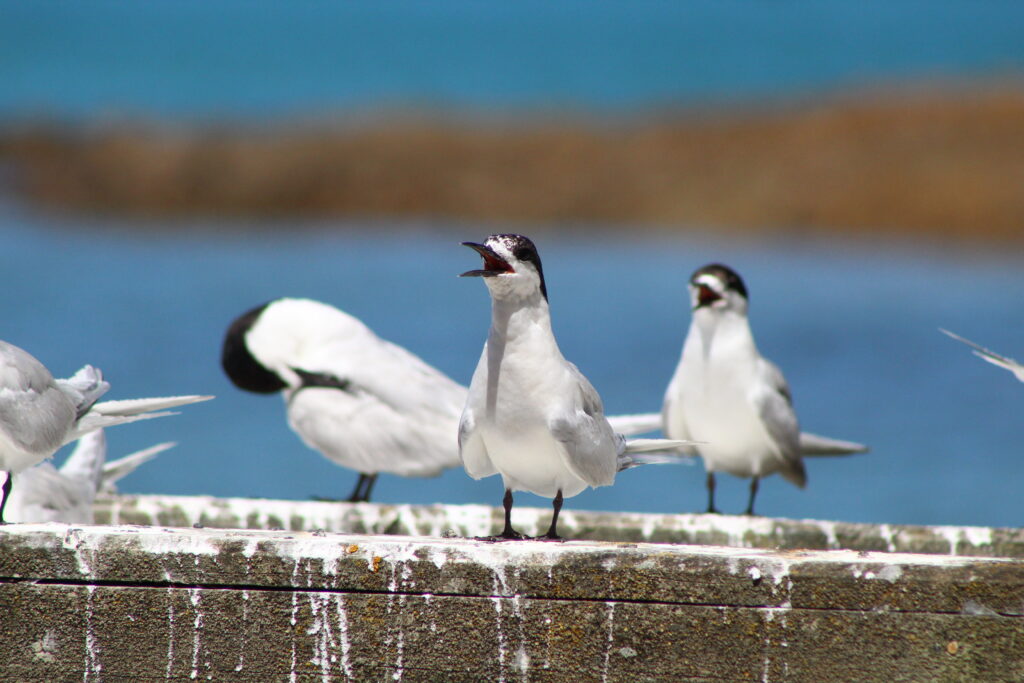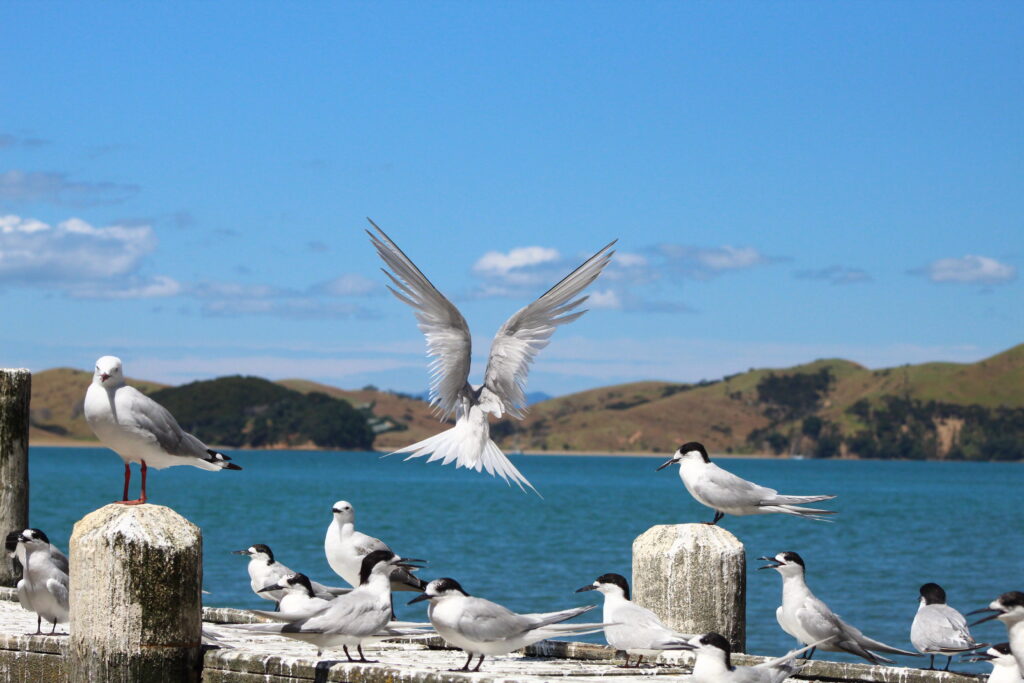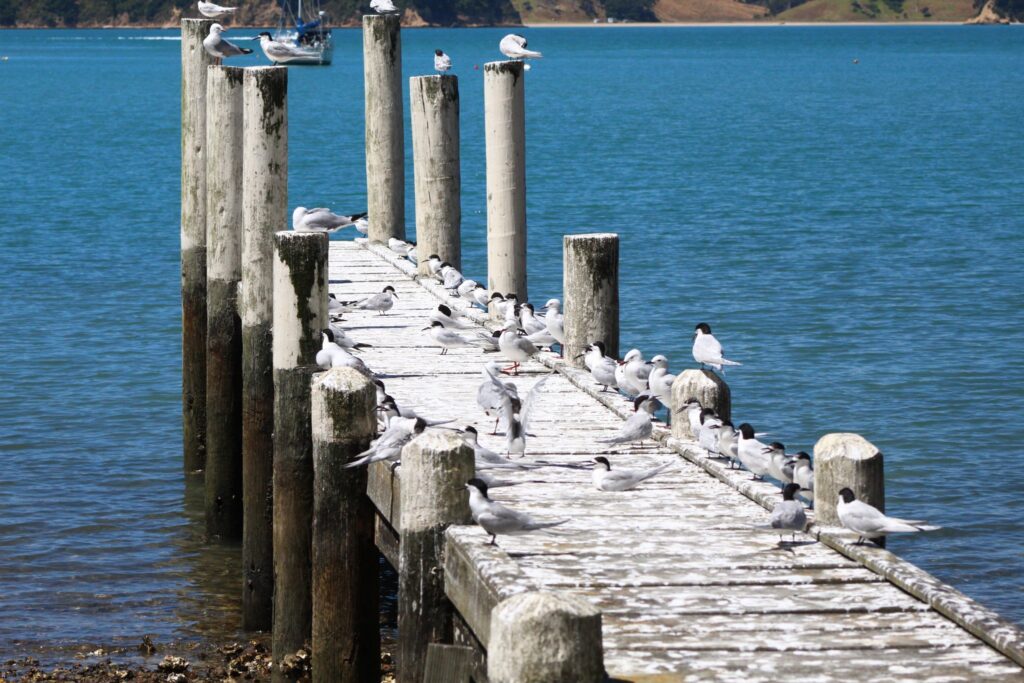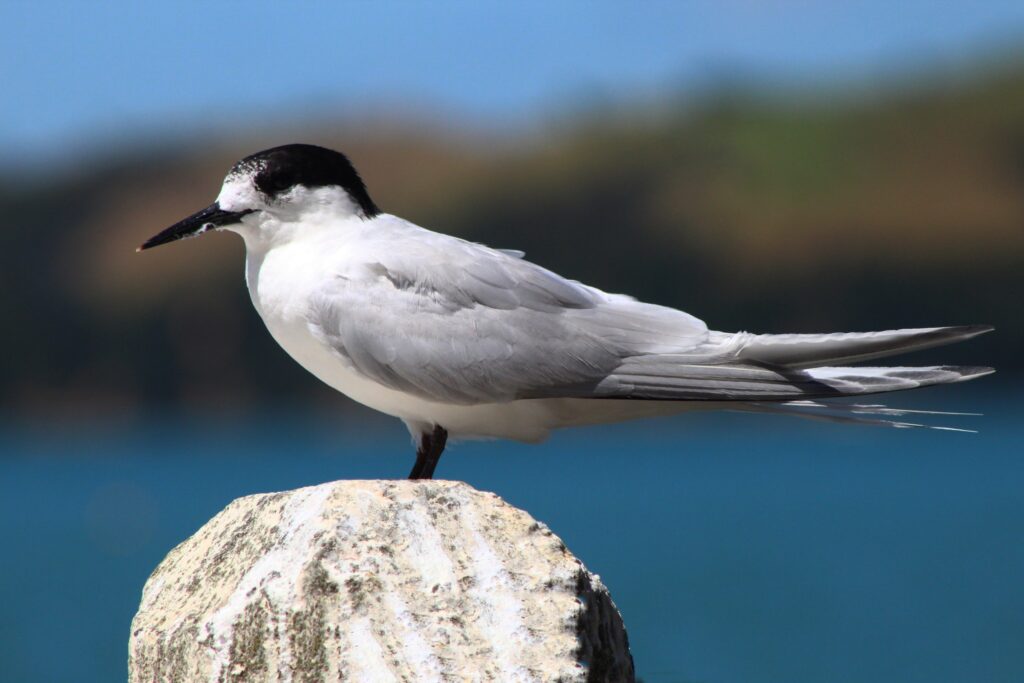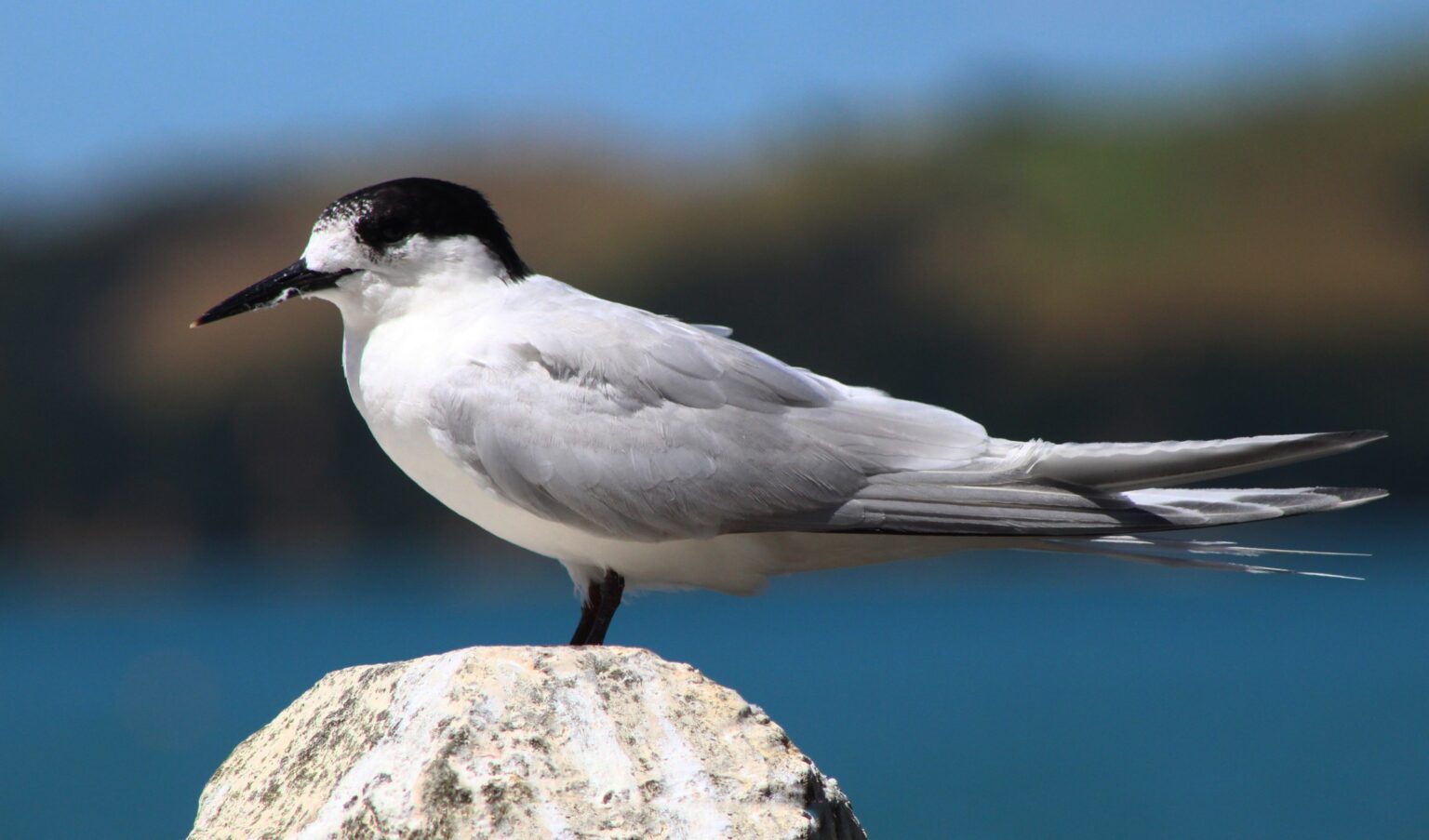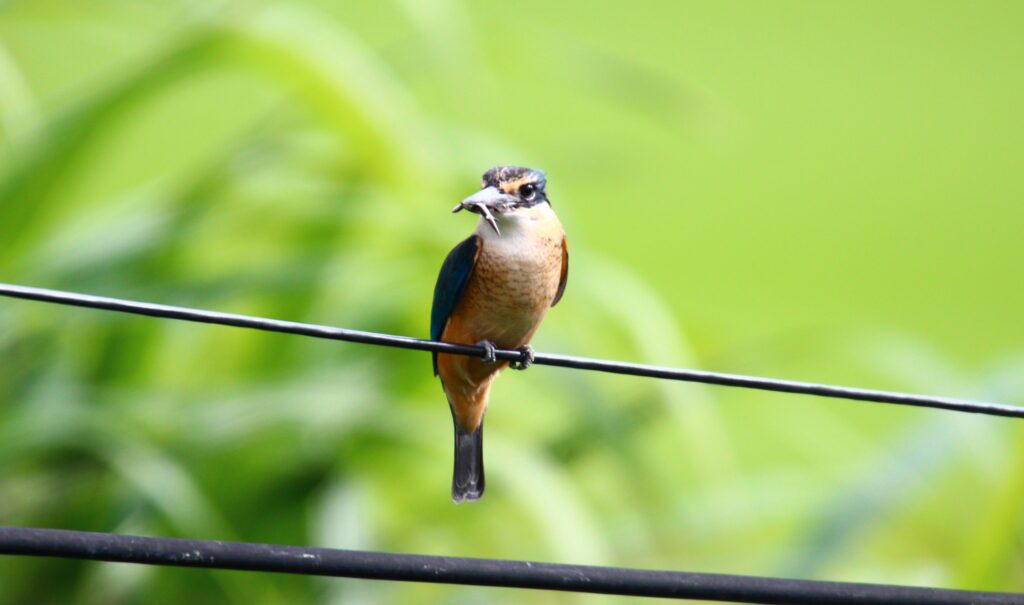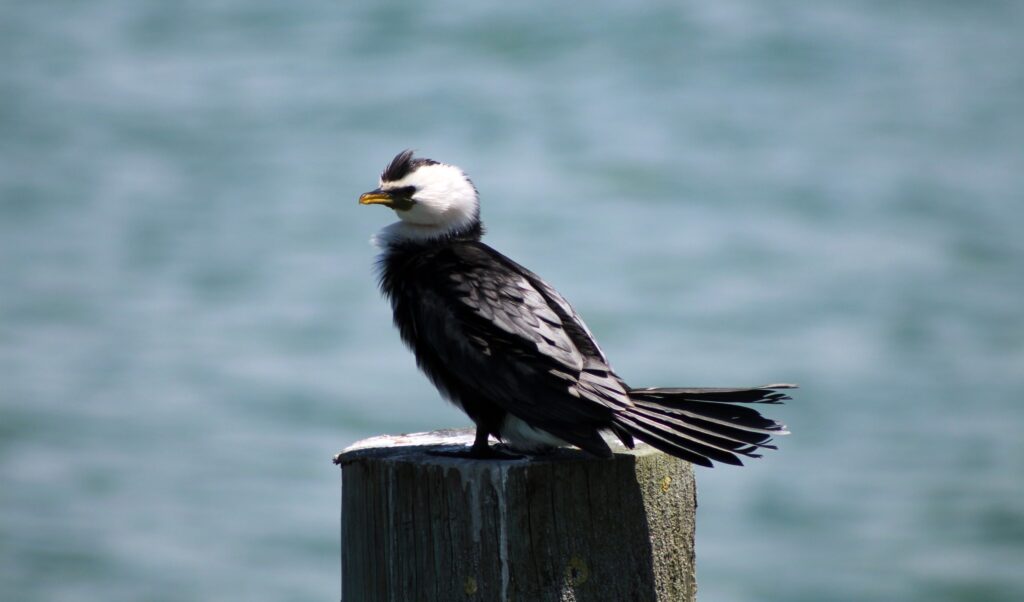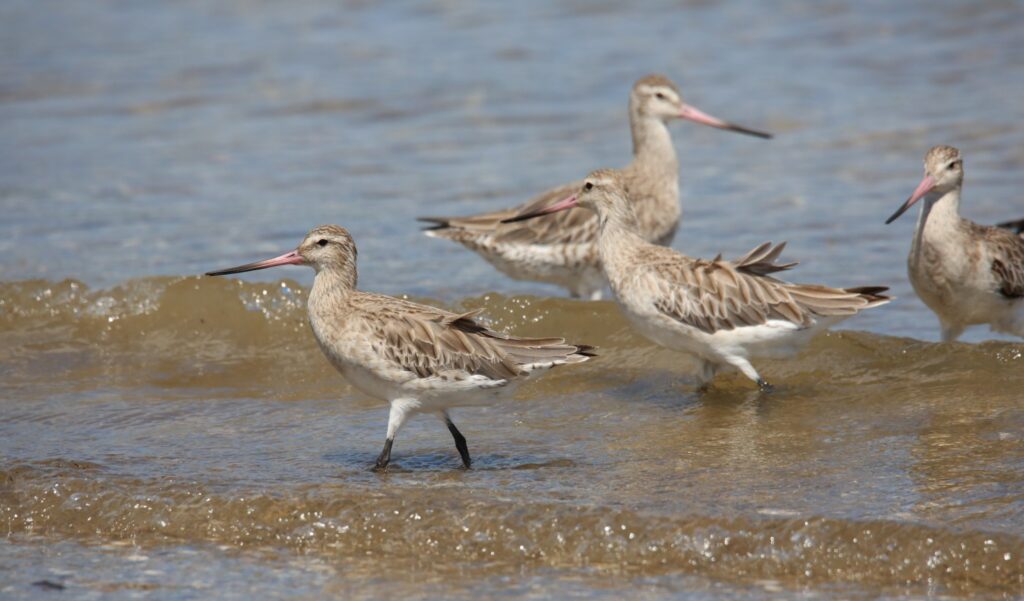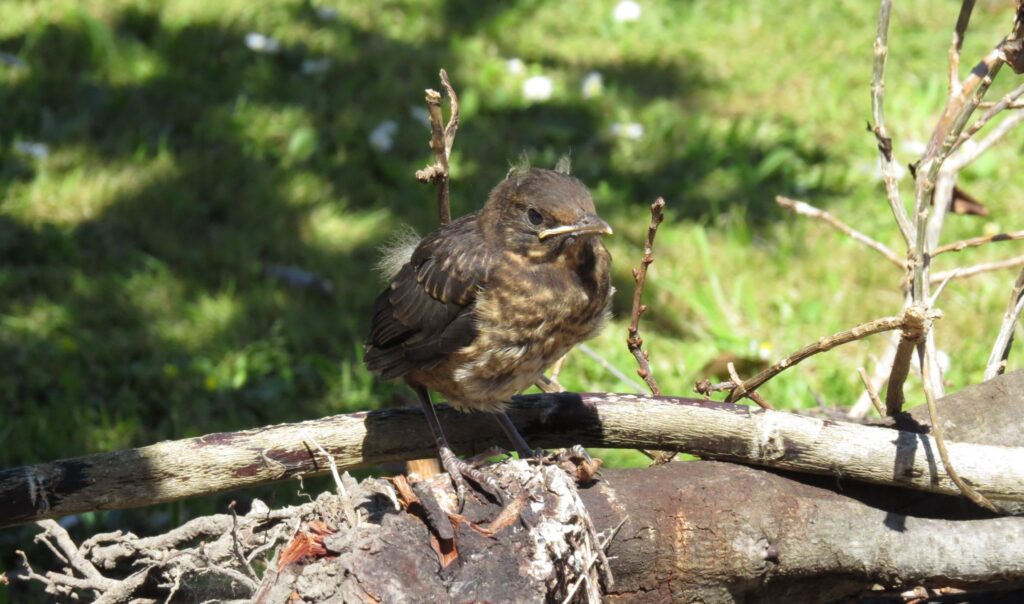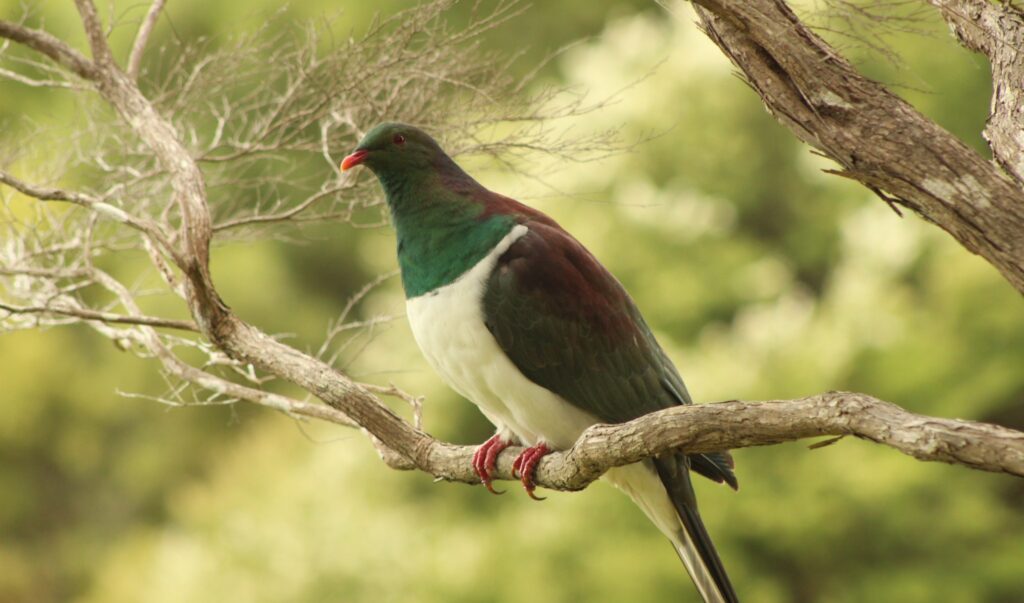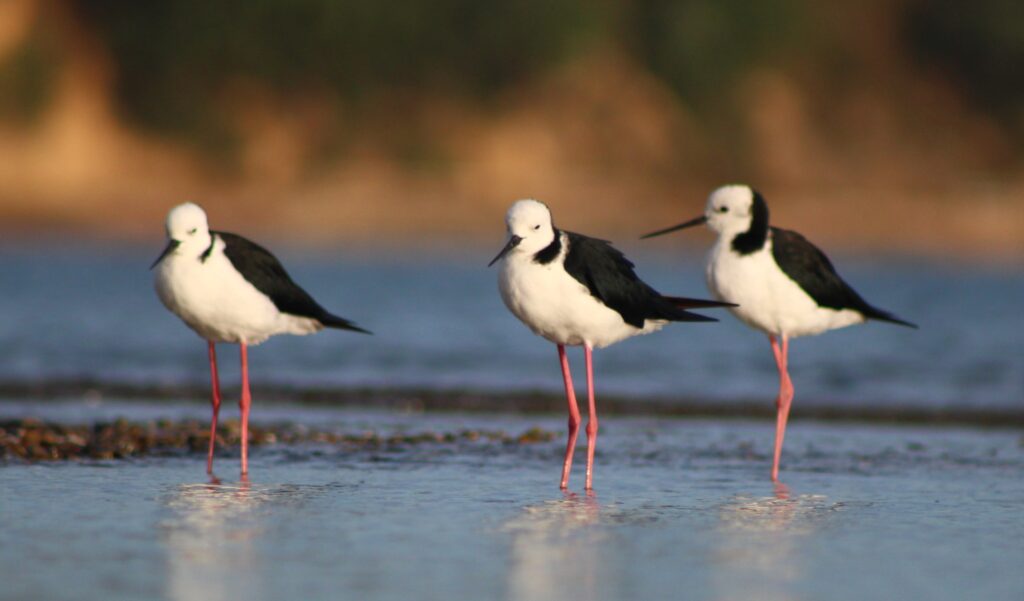Order) Charadriiformes
Family) Laridae
Species) Native
Length) 42 cm
Weight) 160 g
Threats) Rats, cats, stoats, hedgehogs, red-billed gulls
Identification
The white-fronted tern is a medium-sized, long-tailed sea tern that is common around New Zealand coasts. Spotted congregating on Waiheke wharfs such as Matiatia and Orapiu.
The white-fronted tern is the most common tern on the New Zealand coastline, at times occurring in flocks of many hundreds or even thousands of birds.
The name ‘white-fronted’ refers to the ‘frons’ or forehead, where a thin strip of white separates the black cap from the black bill.
It is pale grey above and white below, with a black cap that is separated from the bill by a white band (or by an entirely white fore-crown in non-breeding plumage). The tail is white and forked; the length of the tail and depth of the fork decrease in size outside of the breeding season. The outer edge of the first primary has a narrow black or brownish-black band.
In the breeding season, the black cap extends from the white frontal strip down to the back of neck, and both sexes may develop a pink flush to the underparts. Outside of the breeding season the cap recedes, leaving the forehead white. The eyelids, eyes and bill are black, and the legs vary from black to dull red-brown. Sexes are similar but females are slightly smaller. Immature birds are similar to non-breeding adults. They have the black nape streaked with white and the wing coverts and distinctive light brown mottling. Recently fledged birds have fine blackish barring (striations) over the back and wing coverts.
Their main call is a high-pitched siet; a harsh keark or keeahk is uttered by birds defending their nests.
Most of the terns remain in New Zealand during the winter, but in autumn some white-fronted terns, mostly immatures, disperse to south-eastern Australia.
Breeding
Breeding usually occurs in large dense colonies on shingle river beds, sand dunes, stacks and cliffs.
Breeding season is around October- January.
Pair-bonds are retained from one season to the next. Before laying, the male courtship-feeds the female, presenting small fish to her.
Sometimes a site will be used in successive seasons, but usually the birds change sites in successive years even if they were successful at a specific site the previous season.
Terns tend to arrive at a prospective nesting location only a few days before laying, and there is a high degree of synchronisation of laying within a colony.
The 1-3 (usually 1) eggs are laid in a slight depression on the bare ground without any nesting material. Often small stones are brought in to line the bottom of the nest.
Predators or humans entering a colony are repeatedly dived at.
Food
White-fronted terns feed on small and larval fish at sea.
At sea it frequently feeds in shoaling fish swarms associated with kahawai, gulls and shearwaters. Feeding terns dive from 5-10 m above the surface. The forked tail enables the bird to manoeuvre extremely well, which is an advantage in foraging for small fish.
Waiheke Locations
Matiatia Pier – Spotted flocking on the piers of Matiatia near ferry terminals.
Orapiu Wharf – spotted and photographed a small flock on a small nearby pier taking turns catching food and returning.
The White fronted Tern are flying birds so they can really be anywhere on Waiheke but not just Waiheke they are all over New Zealand, these are just areas I’ve spotted them and photographed.
Gallery
